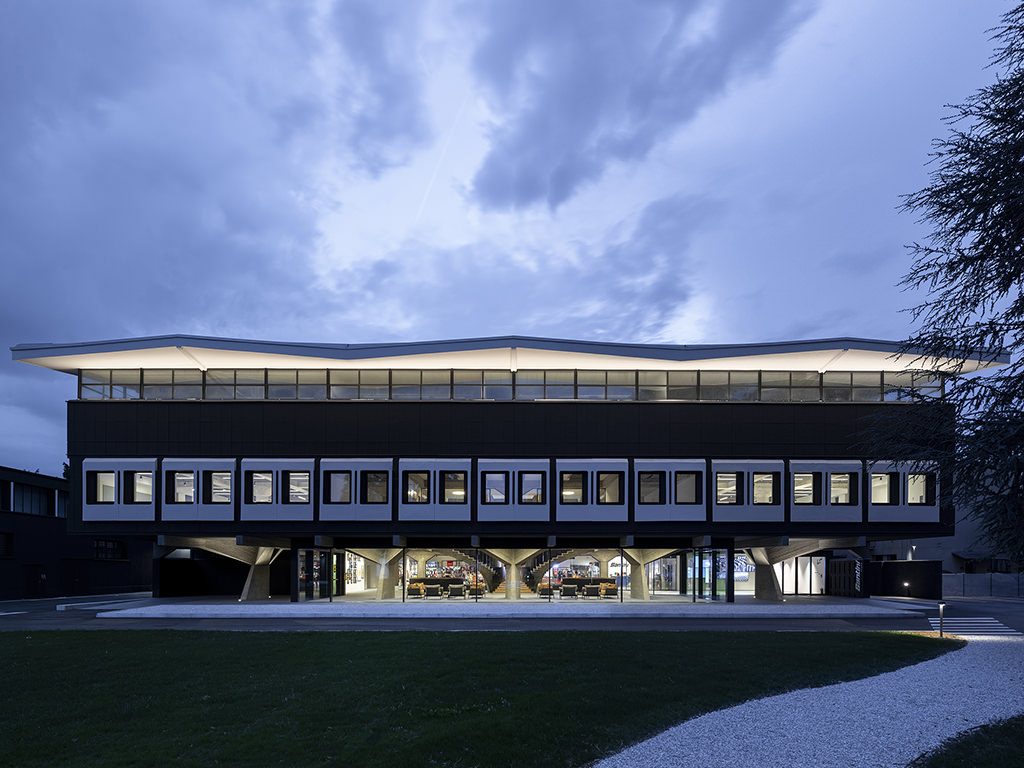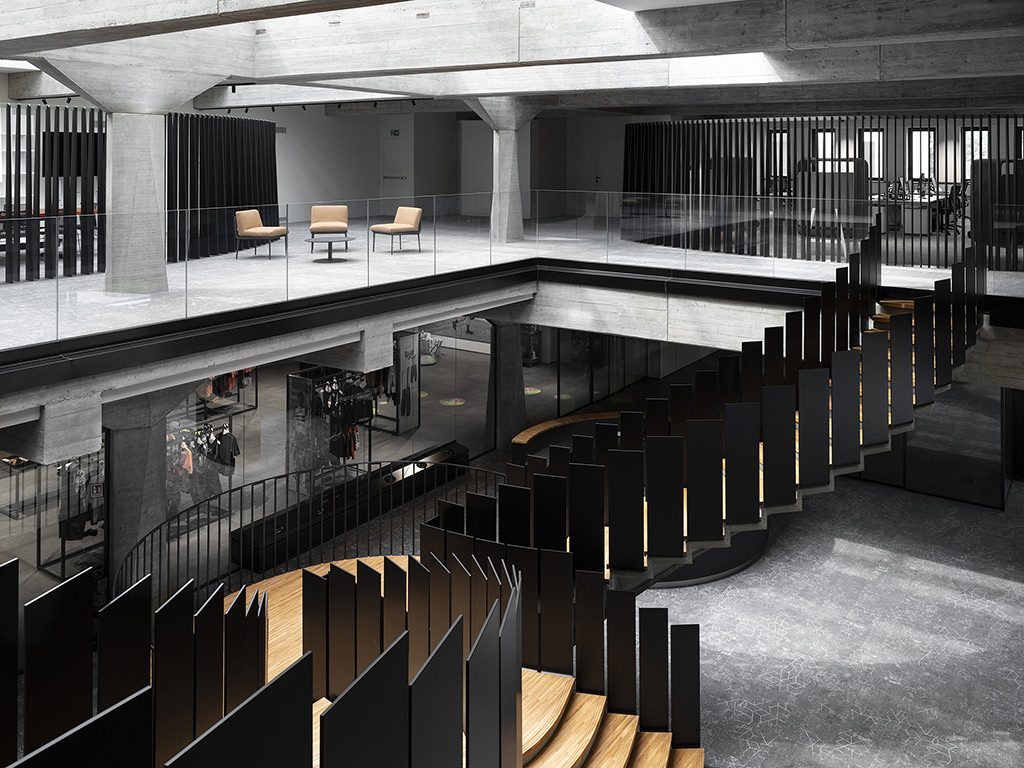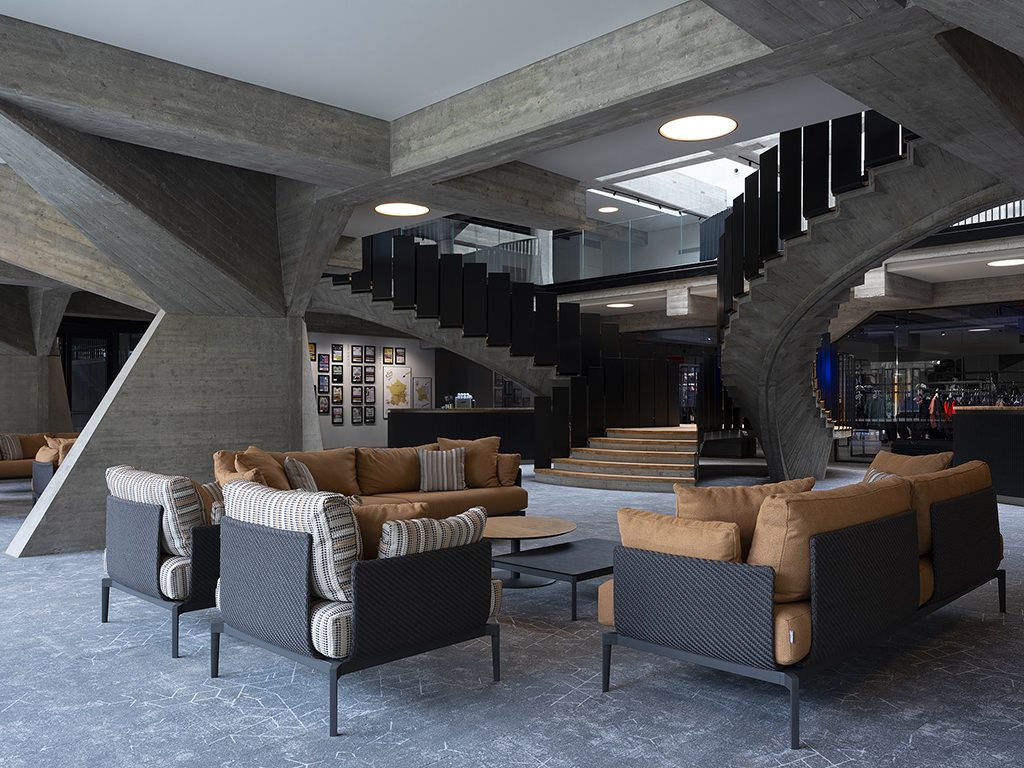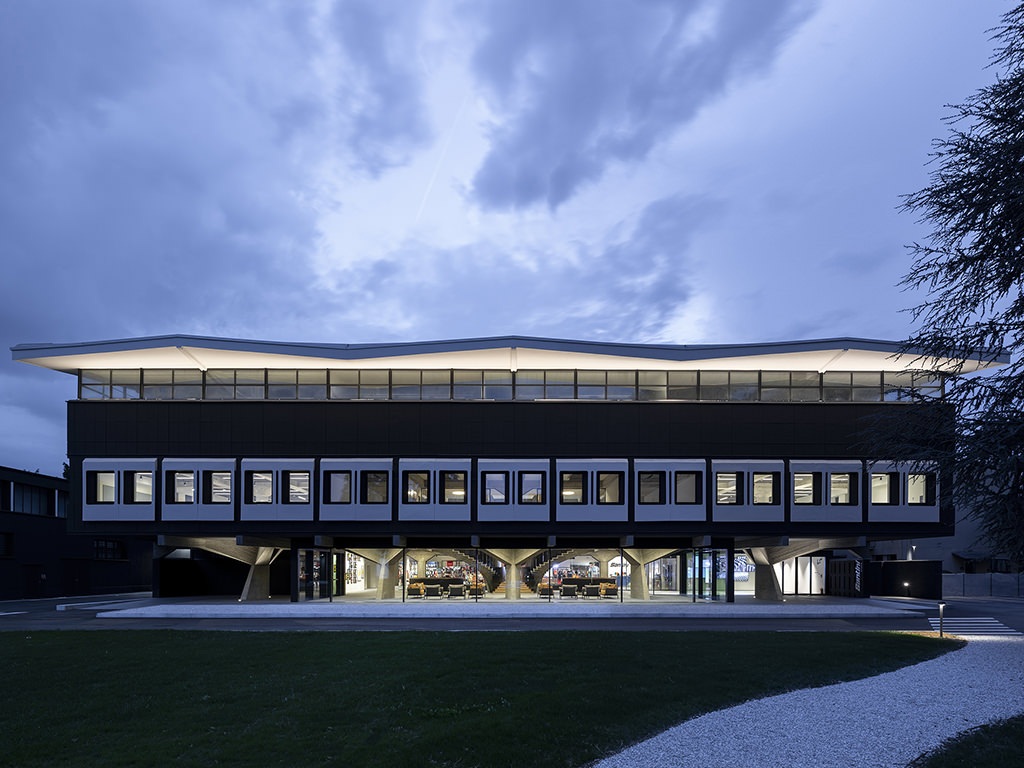In 2021, the company Santini Spa purchased one of the most sought-after industrial land-plots with offices in the city of Bergamo located in a strategic area very close to the city center and accessible from the main highway, the train station and the airport.
Since 1960, a series of buildings have been constructed and cleverly positioned within the area and therefore close to a park with tall trees, making this location an ideal place for urban industrial development on a human scale. What is particularly interesting is the office building, where the work of the architect Gambirasio who created this architectural object is still very evident albeit with clear signs of aging.
At the basis of the architectural and restoration work that we carried out, there was a clear intent to integrate the existing structures of evident historical memory, while allowing Santini -one of the most important brands in the cycling world- to express itself with the strength and dynamism that are characteristic of their corporate culture.
Even for Santini -a family business now managed by the full second generation- being able to settle in a historic building was definitely considered as a great added value with the aim of giving new life to these buildings by completely transferring their production there.

By demolishing some existing buildings that were not deemed useful for the new project and by repositioning the accesses to the area, we have created a new concept, making the store open to the public within the office building, creating a very strong user experience.

The structure of beams and pillars with variable shapes in reinforced concrete is an element that the client immediately liked very much precisely because of that sense of strength and which somehow recalls the muscular power that a cyclist must release to reach his goals. The very shape of the beams and pillars strongly recalls the design of the carbon frames of modern bikes so skilfully shaped and refined in wind tunnels.

From the ground floor and passing through the first floor where the offices are located, you can enjoy natural light and the building experiences the constant change of sunlight throughout the day, which sportsmen who wish to live in the open air all the time really enjoy.
Cycling is fatigue, sweat, sun, rain and wind in your face. It is speed and resistance but it is also dynamism and the ability to adapt to situations.
All this came back to me when I saw the two reinforced concrete staircases cast on site in the 60s. Two helicoidal ramps rushing past the eye like a bike that disappears behind a hairpin bend, two masterpieces both in terms of design but above all in terms of construction.
With this in mind we made some modifications to the staircase but even less on the ground floor landing, thus creating new wider and more enveloping steps towards the base and ultimately a huge amount of design work went into the parapets. Here we wanted to depict the dynamism of speed and wind, with the repetition of an ‘L’-shaped element in curved metal that acts as a parapet, step after step, allowing the staircase to transform into a new volume. The gaps between the ‘L’s allow light to flow through, illuminating the stairs and adding an element of surprise when being used.
On the ground floor there are two large counters, one close to the entrance, which functions as a reception and one on the opposite side which functions as a bar. Together they act as focal points for the ground floor, which becomes a very important place of aggregation and representation.
The showroom together with the restaurant area are located on the opposite side of the entrance and overlook one of the company’s gardens. On the first floor we find the offices created as an open space, separated by wings made up of shaped slats that were custom-designed for the project. Great attention has been paid to the acoustic aspects both with the application of carpeting on the floor and with the use of sound-absorbing panels hanging from the ceiling.
The new headquarters of Santini is a building in balance between industrial history and Italian architectural culture of the sixties, when Made in Italy as we know it today was in its infancy, but already established. It is iconic of an Italian family business that was already active then and that successfully continues a path of growth and innovation by deciding to once again transform history into a winning future.
